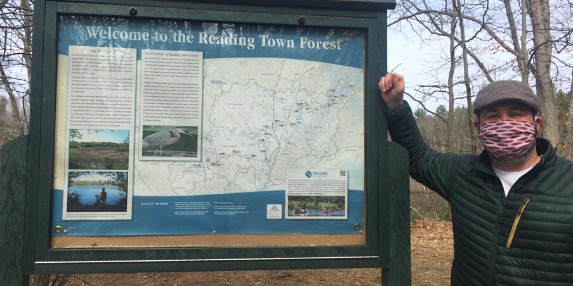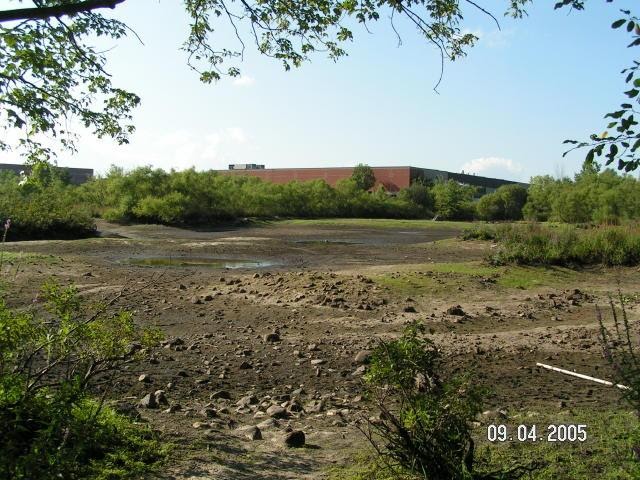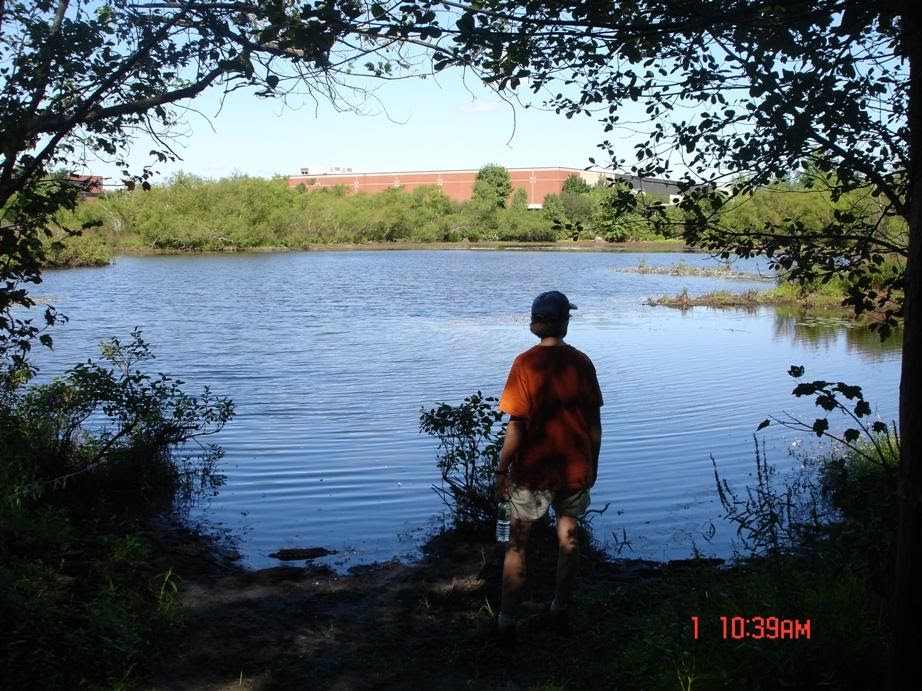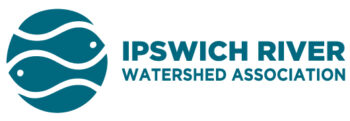
Above Environmental Planner Patrick Lynch stands next to the kiosk near the river access in the Reading Town Forest.
When I was growing up in Reading, one thing we didn’t think much about was the Town Forest. I recall going there a few times with my Cub Scouts troop. I might have gone biking once with my friends, each of us riding our very own Huffy Mudslingers (it was a 90s thing). But I certainly don’t remember a river.
Looking back, it’s obvious why. Until the mid-2000s, Reading’s primary source of drinking water was the Ipswich River. Groundwater wells in the middle of the Town Forest sucked the ground dry. By the time summer vacation came around, it would have been easy for a group of kids riding through the Town Forest to look out at the swampy lowland areas, drained of their magic, and keep going without pause.
But then something happened. The Town switched over to a more resilient water source, in this case one provided by the Massachusetts Water Resource Authority. MWRA is well-known to Boston-area communities. It operates the massive Quabbin reservoir, one of the largest unfiltered water supplies in the United States. The Quabbin provides clean drinking water for millions of residents. Like other reservoirs in the state, it typically fills up during winter months when flow levels are more consistent. River-dependent towns, meanwhile, must deal with the reality of our streams drying up at the same time people are using the most water for non-essential uses like watering lawns.


Above The Ipswich River at Reading Town Forest before and after the Town of Reading’s switch to MWRA water.
Reservoirs are certainly not the answer everywhere. They can disincentivize water conservation, which is a problem for a region that’s suffered two severe droughts in the last five years. But in an era of increasing drought and other climate impacts, the ability to guarantee year-round water for essential uses is critical. Even at the peak of 2020’s severe drought, levels in the Quabbin held at close to 90% capacity. Since 2006, the lowest was 79% capacity during the massively disruptive 2016-2017 drought that whacked New England.
The State Department of Ecological Restoration studied the impact of the switch on the Ipswich River back in 2015, finding that the severity of low flows decreased after the switch to MWRA. During peak summer months, the level of the lowest flows post-MWRA were between 3 to 7 times higher than before Reading switched off Ipswich water. For anyone who visits the Town Forest today, the visual change is obvious. During the devastating drought of 2016 for example, the Reading stretch had the most water in the entire river! The Quabbin and other reservoirs offer a solution for towns that are currently pulling directly from the watershed and see no end in sight. Many communities have existing infrastructure to support a switch to MWRA water during peak usage.
One of our greatest challenges over the next decade is to collaborate at all levels to achieve water security. We need to bring together residents, town leaders and regional water suppliers to not only make the changes we can do now, but also to invest in infrastructure upgrades that will let more towns get their drinking water from more resilient sources. In the Ipswich River watershed there are a number of solutions we can explore, including helping more communities switch to water suppliers with reservoirs such as MWRA or other reservoirs with extra capacity.
For now, the popularity of the Reading Town Forest has increased. The River is now one of the main attractions. At the Town’s recent Open Space and Recreation Planning meeting, several residents proposed offering kayaks and canoes for people to use in the Town Forest. The Town Forest Committee is currently reviewing the idea. Just last week, the Town of Wilmington helped put in a new kiosk at Jenks’ Bridge Landing a few miles upriver, which was built as part of our Ipswich River Water Trail project. Enthusiastic paddlers can now travel from Wilmington, under Interstate 93, straight into the Town Forest and through to the other side, ending at Lob’s Pound Mill. It would be a strange thing for those of us who grew up hearing the steady hum of the highway to go for a relaxing paddle in its shadow!
Young people– the future of the North Shore– are also stepping up. At our public high school, RMHS Sophomore Emma Shmulsky and friends have joined the Environmental Club and are working on a new Outdoors Club to encourage more young people to explore places like the Town Forest and beyond. “One thing we’re hoping to do is to spend time helping improve the Riverfront” This new push among younger residents could help the Town come up with future ideas for getting people outside and encouraging steps like water conservation.
Ultimately, the Town’s decision to switch off Ipswich River water didn’t just put more water in the river. It also gave my Town the chance at a new identity, one that doesn’t depend on telling people how close it is to Boston or taking them to our favorite local bagel shop or furniture store (though both are great).
Over the coming years, our real test will be whether we can turn our attention to resources like the Ipswich River and all that it offers us, rather than highways and the imaginary cultural barriers we’ve thrown up between ourselves and neighbors just a few miles away. As a Headwaters Community, Reading is integral to shaping the river’s path forward.
